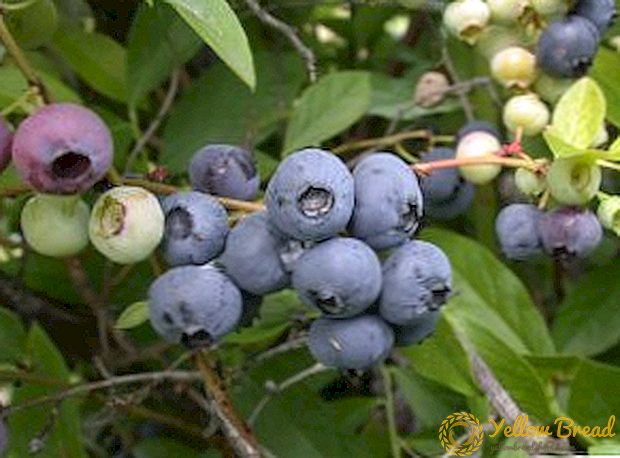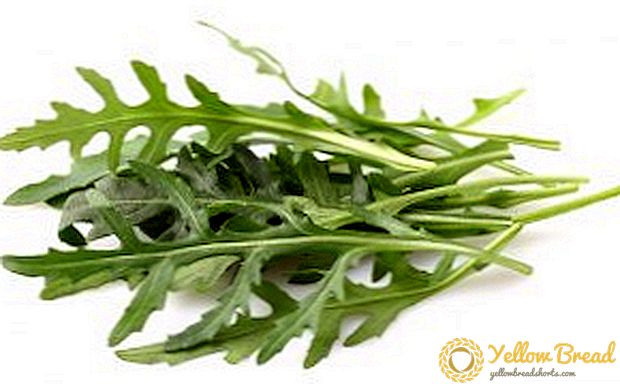 A variety of garden strawberries “Crown” created by Dutch breeders attracted the attention of many gardeners.
A variety of garden strawberries “Crown” created by Dutch breeders attracted the attention of many gardeners.
Let's get acquainted closer with the strawberry "Crown", description of the variety, characteristics, photos and reviews.
- Features grade
- Landing technology
- How to choose seedlings
- When and where to plant the berry
- Scheme of planting seedlings in open ground
- How to care for the variety
- Watering, weeding and loosening the soil
- Fertilization
- Strawberry mulching
- Pest and disease treatment
- Trimming whiskers and leaves
- How to prepare strawberries for winter
- The advantages and disadvantages of the variety
Features grade
Medium-sized bushes, not too leafy and overgrown with whiskers, leaves with a glossy surface, large. Stems with productive peduncles thick, well hold the weight of the fruit. Small berries up to 30 g of weight, the correct form of "heart", dark red color with a shiny surface. The pulp is sugary, juicy and sweet with an added stem, has a bright aroma of strawberries. Strawberry "Crown" in the description of the variety is universal in use and attractive in appearance, as seen in the photo.

Features of a grade:
- medium early variety with a long fruiting period;
- yield from one bush to a kilogram;
- frost-resistant, but not too resistant to drought;
- average safety during transportation;
- resistant to powdery mildew, but prone to root rot;
- due to the large juiciness of the berries is not recommended for freezing.
Landing technology
To get a good harvest before planting strawberries dig up the area and fertilize. If the area before the culture was empty, it is desirable to feed the land: make humus and wood ash. 
How to choose seedlings
When buying seedlings, first of all, inspect the root system: the roots of the roots should be strong, developed and elastic, not dried out, without suspicious spots. Root neck size of at least 6 mm, strong healthy leaves, at least three.
When and where to plant the berry
Strawberries garden "Crown" planted in early spring and at the end of summer. The site is desirable to choose open to the sun, but protected from drafts. The best precursors for the culture are legumes and grains. Before planting the land, it is advisable to once again dig up the shovel bayonet on the floor and apply fertilizer, it is possible to use mineral nitrogen.
Scheme of planting seedlings in open ground
For a bush, they dig a hole a little deeper than the length of its roots, the distance between the holes is half a meter, between the rows - a meter. Planting holes need to be watered well. At the bottom of the hole make an earthen hill, place a bush on it, straighten the roots and sprinkle with soil, but leave the root neck above the surface. The soil around the bush slightly compacted and watered again. 
How to care for the variety
In order for the strawberry not to hurt and not to be invaded by insects, it is necessary to monitor the condition of the soil and the thickening of the bushes. Timely water and feed the culture, loosen the soil.
Watering, weeding and loosening the soil
The variety is recommended to be watered by drip irrigation. If this is not possible, watering should be under the bush once a week (depending on precipitation), with slightly warm water. Per square meter approximately 20 liters of water. Do not stop watering after harvest, let the bushes form healthy buds for the next year.
Fertilization
After the plant has taken root after planting, it began to form new leaves and ovaries of color, you can feed with a nitroammophoska (10 liters 1 tbsp) under a bush. 
During the formation of the fruit, potassium nitrate is also brought under the root - in 10 liters of water 2 tbsp. l substances.
After harvesting the bushes are prepared for winter: make a mullein infusion (bucket), adding a glass of wood ash. In late autumn, before frosts under bushes, soil is covered with humus.
Strawberry mulching
Mulching strawberry beds performs several functions: it protects the plant from overheating, rapid evaporation of moisture, and also protects berries.Touching the ground berries, firstly, they get dirty, and secondly, they can start to rot. As mulch for strawberries is better to use sawdust or straw.
Pest and disease treatment
To avoid root rot and white spot, you need to monitor the soil moisture: an excess of moisture is the first cause of the disease. About root rot will tell the stopped growth of the bush and bluish tint in the color of the leaves and stems, redness of the trunk at the root. This will help drugs "Topsin-M" or "Fundazol." When the white spot darkens the stalks, and the leaves appear on the leaves. Here you need to thin the bushes and process "Falcon" or "Switch" according to the instructions. 
The most frequent "guests" on strawberries: nematodes, weevils, aphids and slugs. Insects can scare away folk remedies: infusion of garlic (coniferous extract 400 ml + 100 g of chopped garlic + 40 ml of boric acid). Spraying with an aqueous solution of the drug "Inta-vir" -1 tablet per 10 liters of water helps. Slugs are harvested by hand, and in order to prevent them from spreading on the plot, the nutshell is poured.
Trimming whiskers and leaves
The strawberry whiskers grow almost continuously, while pulling nutrients, depriving the peduncles and already formed fruits. Only a couple of whiskers are left on the seedlings, the rest are removed.

How to prepare strawberries for winter
By winter, the bushes are cleaned, removing foliage and mustache, which could accumulate infections, to leave offspring insects. The foliage is also removed so that the plant has enough nutrients in winter. After pruning, plants are vulnerable to various fungi and viruses to protect them, the site is sprayed with Bordeaux liquid 1% or sprinkled with wood ash.
It is necessary to thoroughly clean the soil in the beds from plant residues and weeds. Under the bush they put humus before the very frosts. Despite the resistance to cold, it is better to cover the bushes with any covering material.

The advantages and disadvantages of the variety
The indisputable advantages include the excellent taste of the berries: it is juicy, sweet, with no voids in the middle. The crop is resistant to sudden temperature changes and suitable for growing in cold climates. She has a long period of fruiting, good yields.
But there are significant drawbacks: despite the resistance to powdery mildew, the variety is more susceptible to root diseases. On the one hand, the juiciness of the berry is dignity, but on the other hand it is difficult to transport the ripe berry, it is too deformed.
In general, the strawberry "Crown" receives positive reviews: it is tasty, it has an attractive appearance, good yield. But it is not considered suitable for growing for sale, only for its own use in small areas, where there is more opportunity to protect against disease, and there is no need to worry about the presentation.






